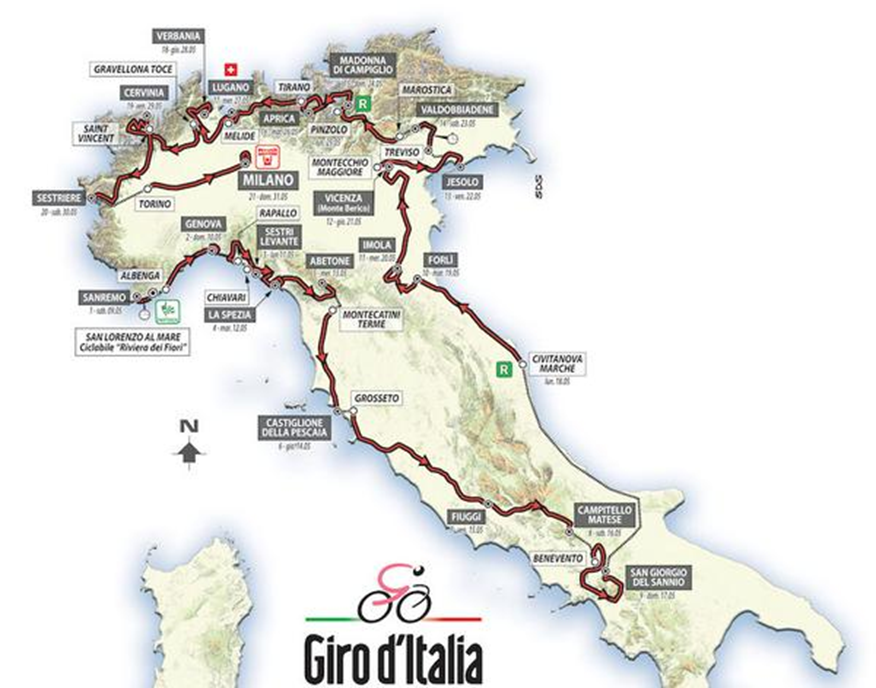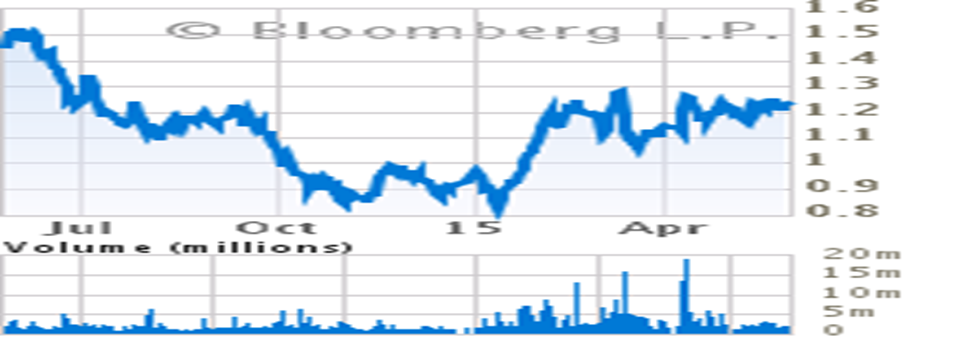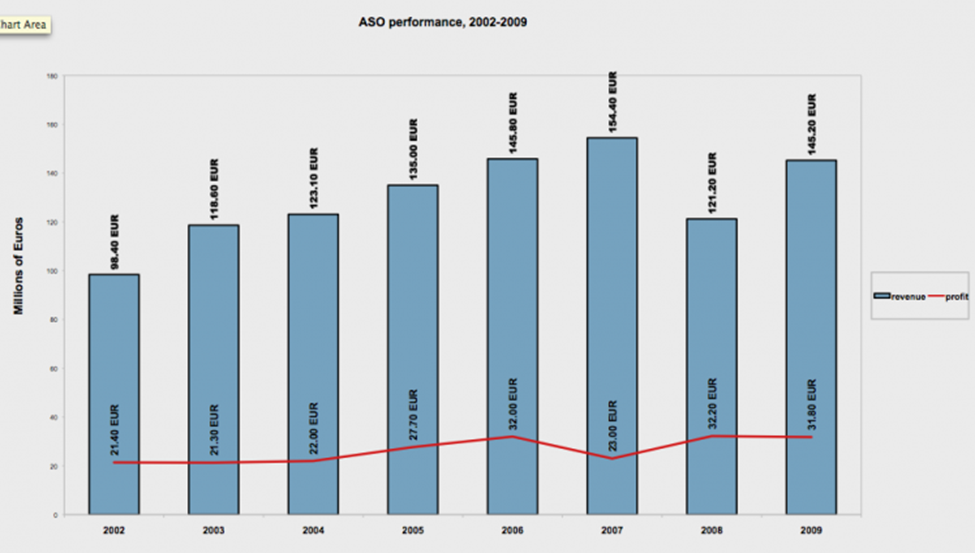Introduction
The cycling sport has experienced substantial growth over the decades characterized by global events that attract participants from different continents. This paper will compare the Giro d’ Italia and Tour de France, which are annual cycling sports events that fall under the governance of the International Cycling Union(UCI) by assessing individual aspects that may affect the future of the sport and the way forward.
Description and Background
Giro d’Italia
The Giro d’Italia is a “cycling event that was born in 1909 with the aim of promoting the sales of an Italian sports newspaper, viz. La Gazzetta Dello Sport” (McGann & McGann, 2011, p. 82). The race started in Italy initially and later expanded to neighbouring countries as part of the circuit. The Giro d’Italia is currently managed under the watch of the RCS Sport, which is a sports media organization that collaborates with the UCI in facilitating the management of the cycling race. The Giro d’Italia now attracts participants from all over the world to compete in cycling races that transcend the Italian boundaries.
The Giro cycling race calendar usually starts late May for three weeks forming the Grand Tours alongside other events like the Tour de France and Vuelta a España. New routes are set annually with challenging sections such as cycling on the Alps Mountains. However, the formatting is typically consistent throughout the annual events. The winner is “decided after compounding the riders’ times before the participant with the lowest combined time is crowned” ((McGann & McGann, 2011, p. 102). The winners are usually embellished with a pink jersey as a way of showing recognition. The Giro d’Italia has various classifications for cyclists including climbers, sprinters, young cyclists, and team categories.
Tour de France
The Tour de France is a cycling event that was launched in 1903 with an aim of marketing the L’Auto newspaper. Initially, the cycling competition was only held in France as a product promotion strategy for the L’Auto newspaper, which is a sports-oriented daily publication. In subsequent years, neighbouring countries were included as new routes were formulated. The two World Wars affected the race since it was not held during that period due to security concerns. The Tour de France has since become popular and it attracts cyclists from all over the world during its annual events. The race is currently managed under the watch of the Amaury Sports Organization (ASO). Since the event is a UCI World Tour, it accommodates UCI Pro Teams from various regions, and thus it breeds competitiveness (White, 2015).
The Tour de France calendar starts from July and runs for three weeks. The routes change annually, but all other aspects of formatting remain consistent. The race is characterized by challenging phases in the mountainous Alps region before crossing the finish line at Champs-Élysées in Paris. The event lasts for 23 days inclusive of two days of rest thereby covering 2200 miles comprising clockwise and anti-clockwise circuits. The race has various classifications including points, mountain climbing, team, and the young riders’ categories (White, 2015). Winners are adorned with the highly coveted yellow jerseys after compounding the riders’ times whereby the participant who accumulates the lowest time is crowned.
EGSOP aspects of Giro d’Italia and Tour de France
Some similarities and differences exist between the annual two cycling events. Factors such as the cycling environment, governance, strategies, organization, and performance facilitate the comparison of the two prestigious cycling events that have been around for over 100 years.
Environment
The surroundings in which both the Giro and Tour de Italia are held play a significant role in facilitating their success over the years. After the inception of the Tour de France in 1903, the competition was primarily held in France whereby cyclists could even race at night with only the moon as their source of light. The French bicycle race makes part of the prestigious UCI World tours where cyclists race within the France territories and beyond. The road race is characterized by challenging sections for sprinters and mountain climbing. The ASO facilitates airing of the race live for international coverage (Velo News, 2010)
On the other hand, The Giro d’Italia was primarily held in Italy after it was first launched in 1909. Just as the Tour de France, the Giro attracts UCI Pro Teams from all over the world, thus making it a renowned cycling World Tour. The race usually starts in Italy as cyclists take on a road trip via challenging routes including the Alps region. The race has become famous since it has set starting points outside France, thus making it popular in Europe and beyond. The event organizer, viz. the RCS Sport, facilitates capturing of the event on video for live broadcasting. The Giro’s cycling routes are one of the best in the World Tour with cyclists preferring it due to the beautiful Italian sceneries.

Governance
Over the past millennium, several management changes have affected the Giro d’Italia and the Tour de France cycling races. There has been a jolting and arbitrary evolution of the UCI World Tour sports over the decades. The Giro has been affected by various sponsorship deals initiated by the UCI that have seen new winners from outside Western Europe. Globalization of the peloton implies that the RCS Sport considers teams from other regions other than Western Europe, hence expanding the scope of its governance to the global level. Similarly, the Tour de France falls under the governance of the UCI. The UCI handles the overall management of the event with the objective of promoting the sport internationally.
Strategies
The RCS Sport, the organizers of the Giro have been strategizing on making the event more famous internationally. The organizers are planning to enhance its circuit by expanding its route to Northern Ireland. They are also strategizing on measures to add more climbs beside the Stelvio and Mortirolo challenging points. New territories such as the Colle dello Finestre and the Zoncolan have been added to make the Giro d’Italia highly attractive to both cyclists and spectators, thus boosting its growth. Since the RCS Sport is a media organization, it airs the annual UCI Tour in a bid to facilitate a global audience for the event (Rebeggiani & Tondani, 2008).
The strategies employed by the ASO are geared towards marketing the sport internationally. Earlier in 2015, ASO acquired a 49% stake of Unipublic, an organizer of the Vuelta a España, which makes part of the UCI World Tours. In so doing, it implemented it strategies of securing its presence beyond the French borders, hence marketing the sport internationally, which would increase the company’s revenues in the long-term.
Organization
The management of successful events such as the Tour de France portrays the efficiency of the organization that runs the event. The RCS Sport has various strategies that it implements to facilitate the Italian version of the UCI World Tours. RCS Sport strives to make the Giro d’Italia the best phase of the UCI World Tours. In managing the Giro, the organizer envisions a global perspective of the event (Rebeggiani & Tondani, 2008). Consequently, the event has been held in various countries outside Italy in a bid to factor the international operations aspect.
The ASO, which manages the Tour de France, is a media entity that covers sports news and events. The ASO is a powerful sports media entity in France, which also works in close collaboration with the UCI in organizing the Tour de France event. The ASO focuses on marketing and merchandising it brands as it organizes the Tour de France event. In this regard, it seeks for the growth of the sport on a worldwide level and maintains the company’s good image as well (Morrow & Idle, 2010)
Performance
The organization of the Giro d’Italia and the Tour de France has financial implication to the involved stakeholders. In this regard, RCS Sport and ASO are expected to record financial gains or losses that indicate their performance after organizing the events. The figures below show the financial performance of ASO and RCS Sport after organizing the Tour de France and Giro d’Italia.


Issues Affecting the Giro d’Italia and Tour de France
The UCI, under the leadership of Brian Cookson, has experienced numerous challenges that have adverse implications for both the Tour de France and the Giro d’Italia. The sport has a high potential for return on investments, and thus issues such as doping, financial constraints, confusing governance structure, and overlapping calendars have threatened the success of the UCI World Tours (Morrow & Idle, 2008). Therefore, the future of the events tends to be unpredictable; hence, solutions are needed for the sustainability of the events.
Various obstacles have hit the Giro’s intentions of conducting its cycling events outside Europe. For instance, the RCS Sport intended to start its cycling race from Washington DC, but time difference and cost of travel from Italy to the US challenged the practicality of the move. Therefore, effects of long travels on cyclists and jetlag issues tend to inhibit the expansion of the Giro to other parts of the world.
The UCI intends to remodel the financial structures of the World Tours, which are dependent on inconsistent sponsorship deals. The financial constraints have resulted in “paycheck insecurity”, hence threatening the stability of the organization. In this regard, both the RCS Sport and ASO have had challenges in securing consistent financial partners that would enhance the economic sustainability of the UCI World Tours (Morrow & Idle, 2010).
Conflicts of interest have interfered with the organization of the Giro and the Tour de France. Past UCI scandals have led to incompatible leadership roles resulting in interference with the organizational systems at the RCS Sport and ASO due to wrangles based on the financial and leadership aspects emanating from the UCI governance. For instance, the ASO, which is a major stakeholder of the Tour de France, has gone ahead and acquired rights to manage the Vuelta a Espana, thus compromising its commitment to the French-based race. In this regard, conflicts of interest arise since ASO is perceived to be after financial gains by managing events outside France.
The issue of doping has been a challenge to the UCI World Tour events as dishonest cyclists continue using energy-boosting drugs to win races. Overlapping authorities have inhibited the full implementation of drug testing and policing programs, hence resulting in the negative perception of the fairness of both the Giro d’Italia and Tour de France (Parkin, 2012). Consequently, the UCI is inconvenienced since it cannot manage both the management and regulation of the World Tour events. Recently, allegedly more than 90% of the cyclists who participate at the Giro were reported to have engaged in doping. For this reason, the remaining 10% only use the race as preparation for other cycling competitions. Therefore, the top 10 finishers at the Giro d’Italia are usually perceived to have doped, thus tarnishing the reputation of the over 100-year-old event.
The Giro d’Italia and Tour de France events fall under the UCI calendar, which kicks off in January to October. Overlapping of events tends to interfere with athletes’ preparations for the Giro and Tour de France (Brewer, 2002). For instance, the Tirreno-Adriatico and Paris-Nice cycling events fall in the month of March. Therefore, professionals who engage in the events tend to experience fatigue before the major tours kick off in June and July for the Giro and Tour de Italia events respectively. The crowded racing calendar, thus affects the organization of the Giro and Tour de France.
Discussion
Evidently, both the Giro d’Italia and Tour de France have been running for over 100 years since they were established. The two racing events have various similarities due to their affiliation to the UCI as the governing body. The initial aim of organizing the events is similar since both were geared towards promoting magazines. The inauguration of the Tour de France in 1903 targeted at improving the sales of the L’Auto Sports magazine. Similarly, the Giro’s first event organized in 1909 aimed at marketing the La Gazzetta dello Sport, which is a sports media house. The trend of affiliation to media organizations has transcended to the current generation whereby the RCS Sport and ASO run the Giro and Tour de France respectively under the watch of the UCI.
The environments are similar since the events are majorly held in Western Europe originating from Italy and France then extending to nearby countries. The two events run for three weeks with similar formatting schedules whereby professional cyclists are timed before the participant with the lowest aggregated time is crowned the winner. Winners are usually adorned with distinctive jerseys as this aspect acknowledges their success. The top riders at the Tour de France are given a chance to wear the coveted yellow jersey while the Giro acknowledges its top performers with a pink jersey. In this regard, both events have numerous similarities especially on the formatting of the races, thus making the UCI World Tours identical.
Despite the various similarities and a few differences, the Giro and Tour de Italia has faced several problems that have interfered with the organization of the events. Issues such as financial uncertainties, doping, overlapping calendars, and ineffective governance structures due to conflicts of interest have subjected the Giro and Tour de France events to inefficiencies. For this reason, RCS Sport and ASO have been subjected to inconveniences arising from vital stakeholders such as the UCI, investors, and the testing and certification authorities. Thus, it is essential for the relevant parties to strategize on measures that intend to alleviate the inefficiencies that have faced the two competitions.
The Way Forward
Due to the challenges that have threatened the future of the Giro d’Italia and Tour de France, it is necessary to strategize on plans that would contain the threats. The issue of paycheck insecurities needs to be addressed to manage the financial aspect of the UCI World Tour events effectively (Parkin, 2012). The economic foundation of pro cycling is thus a crucial issue that needs to be addressed by the organizers of the UCI World Tours. This aspect should entail strengthening the diversity of revenue accumulation, expenditure, and reinvestments coupled with how the profits will be shared to avoid conflicts amongst stakeholders. The UCI in collaboration with the RCS Sport and ASO need to strategize on ways of curbing the unpredictability of the commercial sponsors in a bid to facilitate the efficient organization of the events. In this regard, the ASO, which is perceived as short sighted since it pursues short-term financial gains at the expense of the sport’s future, needs to review its marketing approaches for compatibility purposes.
Analysing and revamping the structure and schedule of the UCI World Tours are necessary for a streamlined UCI calendar. The Tour de France and Giro d’Italia have been affected by other overlapping events that are held before June such as the Paris-Nice race. The proposal of having two leagues would allow teams to participate in top leagues throughout the season without missing significant events (Parkin, 2012).
An assessment of the organization’s performance and key stakeholders needs to be carried out to solve the incompatibility issues. Conflicts of interest among the stakeholders need to be dealt with to facilitate collaborative efforts that aim at improving the Giro and Tour de France. Additionally firm structures that deal with doping issues need to be put in place. The high cases of doping reported at the Giro could be curbed by establishing new ethical standards and an independent testing and certification authority. In so doing, the UCI would be relieved from the drugs’ regulatory functions and concentrate on organization and promotion of the World Tours. The institution of ethical values to be upheld by all cyclists is also a bold move towards alleviating the problem of doping whereby deviant cyclists are heavily punished (Parkin, 2012).
Conclusion
Comparing the Giro d’Italia and Tour de France unmasks various similarities and differences between the two famous UCI World Tour events. Aspects of governance, environment, organization, strategies, and performance enhance the comparison of the two races that make up the UCI Grand Tours together with the Vuelta a España. Particular challenges ranging from financial management, organizational inefficiencies, overlapping calendars to doping issues tend to pose threats to the future of the Giro and Tour de France. Therefore, appropriate measures need to be taken in a bid to deal with the challenges and secure the future of the UCI World Tours.
References
Brewer, B. (2002). Commercialization in Professional Cycling 1950-2001: Institutional Transformations and the Rationalization of Doping. Sociology of Sport Journal, 19(3), 276-301.
McGann, B., & McGann, C. (2011). The Story of the Giro d’Italia: A Year-by-Year History of the Tour of Italy, Volume 1: 1909-1970. McMinnville, OR: McGann Publishing LLC.
Morrow, S., & Idle, C. (2008). Understanding change in professional road cycling. European Sport Management Quarterly, 8(4), 315-335.
Morrow, S., & Idle, C. (2010). The challenges of modernizing a professional sport: a case study of professional road cycling. In S. Chadwick & D. Arthur (Eds.), International Cases in the Business of Sport (pp. 45-59). New York, NY: Routledge.
Parkin, J. (2012). Cycling and Sustainability. Cambridge, MA: Emerald Group. Rebeggiani, L., & Tondani, D. (2008). Organizational Forms in Professional Cycling–Efficiency Issues of the UCI Pro Tour. International Journal of Sport Finance, 1(13), 19-41.
Velo News: Inside Cycling with John Wilcockson: Armstrong had little effect on Tour profits. (2008). Web.
White, J. (2015). The Tour de France Miscellany. London, UK Carlton Publishing Group.